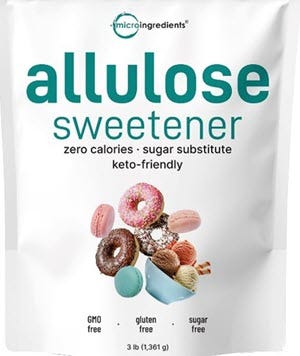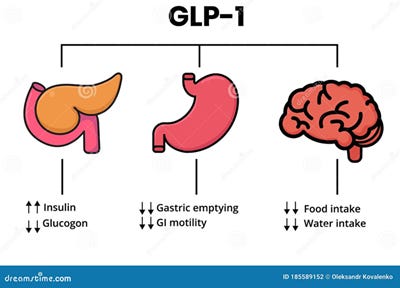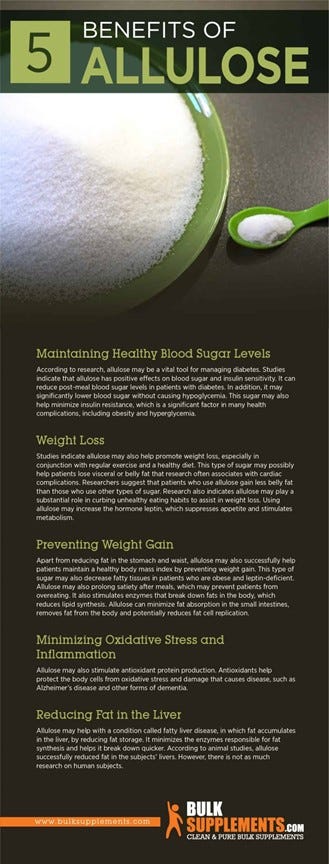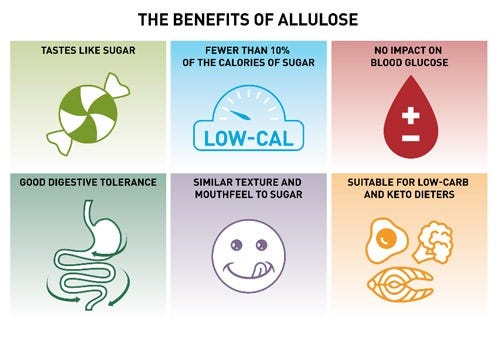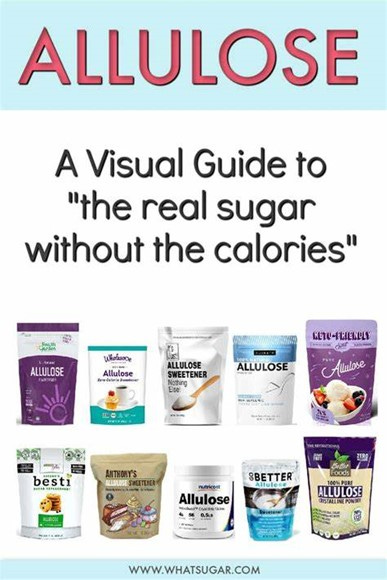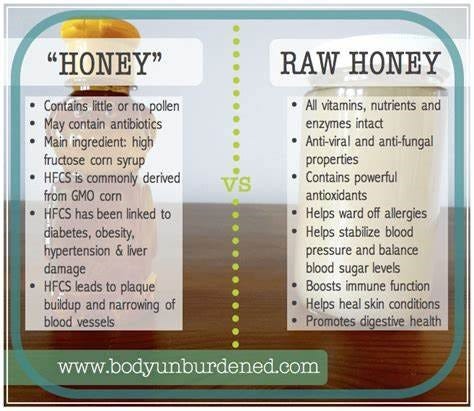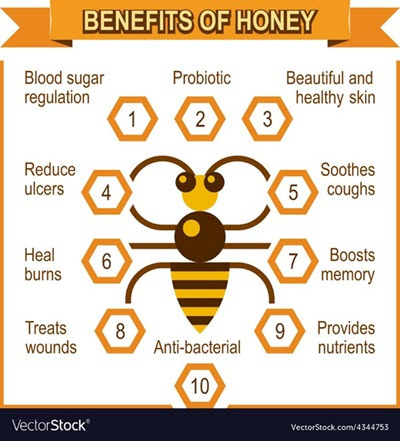If you had to design a sugar replacement, what features would you make sure it had? How about tasting like sugar, with a similar texture, you could cook with it in the same way as sugar, it did not raise your blood sugar levels and cause obesity and diabetes and would not cause dental decay. I would think we would all have a similar list for our fantasy sugar replacement. What would you say if I told you that our wish lists have come to fruition in a sugar named allulose.
Allulose is a term that has begun to capture the attention of health-conscious consumers, food scientists, Foodies, and culinary innovators around the world. And it is for many good reasons that we will explore shortly.
Promoted as a low-calorie sweetener with a taste and texture remarkably similar to traditional sugar, allulose is poised to change the way we think about sweetness and nutrition. This week let’s take a ride together into the Medical Underground and learn all about this fascinating sugar.
What is Allulose?
Allulose, also known as D-psicose, is a rare sugar that naturally occurs in small quantities in certain fruits, such as figs, raisins, molasses, maple syrup, wheat, and jackfruit.
Chemically, it is classified as a monosaccharide, or simple sugar, and has a molecular structure almost identical to that of fructose, one of the primary sugars found in fruit. Despite this similarity, allulose differs significantly from regular sugar in how it is metabolized by the human body.
Allulose has been available since 2010 in the United States, and the FDA classifies it as GRAS, or Generally Regarded As Safe. Allulose is also available in Singapore, South Korea, Japan, and Mexico, but is yet unavailable in Canada or the European Union. They regard it as a “Novel Food”. Which in essence means they have not had sufficient time to test it as per their standards. Too bad for them, the Medical Underground thinks that was a big mistake. Let’s see why.
Chemical Properties and Sweetness
Allulose (C6H12O6) is a stereoisomer of fructose, meaning it shares the same molecular formula as fructose but has a different arrangement of atoms. The same parts in a different end shape, giving it very different characteristics than fructose. This subtle difference is critical, as it influences how allulose interacts with our taste buds and, more importantly, how our bodies process it.
In terms of sweetness, allulose is approximately 70% as sweet as sucrose (table sugar). However, its taste profile is clean and closely mimics that of sugar, without the metallic or bitter aftertaste often associated with some artificial sweeteners.
Allulose also behaves like sugar in cooking and baking, caramelizing and adding bulk to recipes, making it attractive for use in a variety of foods and beverages. However, one should keep in mind that since allulose is only 70 percent as sweet as sugar, you might want to use more allulose in your recipes to get the same sweetness.
With only 10% of the calories of table sugar, allulose is around 70% as sweet. One gram of allulose provides about 0.4 calories, compared to 4 calories in one gram of sugar.
Allulose also has a glycemic index of zero, meaning it does not raise blood sugar or insulin levels. Let that sink in for a moment. Allulose is almost as sweet as sugar, can be substituted freely in recipes, and eating it does not raise your blood glucose levels! Sign me up!
Normally, when you eat something sweet, you absorb those sugars and consequently your blood glucose levels rise in proportion to your intake. Those spiking blood glucose levels cause the release of insulin, which drives sugar into cells lowering its blood levels. Insulin also promotes fat storage leading to obesity. Being able to eat sweets without those metabolic consequences is the Holy Grail of dessert.
WHAT IS WRONG WITH SUGAR?,
Americans are eating tons of sugar in their daily diets, dwarfing the amounts eaten in previous generations. Currently Americans eat 60 lbs. of sugar annually! A large percentage of which comes from sugar laden drinks, but nevertheless, our diets are heavily sugar laden. The preponderance of sugar in our diets is because it is cheap and readily available to the masses.
What they don’t tell you is how truly addictive sugar is to humans. Studies have rated refined sugar as being more addictive than cocaine. I personally found that hard to believe, but without arguing the fine points, the message is clear: sugar is addictive.
Food manufacturers are fully aware of sugars addictive potential and naturally exploit that in the cheap foods they mass market to us and more importantly, to our children. In our brains sugar activates the brains reward system, flooding it with the feel good hormone dopamine, making us very happy.
Artificial sweeteners have not lived up to the hype, especially with taste, and they are not without their own potential problems. Many patients cannot tolerate them — having urinary problems, IBS type issues, and are known to disrupt the healthy gut microbiome that we so need to maintain good health. All of these changes contribute to the metabolic syndrome, chronic diseases, hypertension, obesity, and insulin resistance leading to diabetes.
Allulose is a natural not an artificial sugar sweetener that the body recognizes, hence it does not lead to any of the potential side effects sometimes associated with artificial sweeteners.
Kinky Facts/Nerd Food: Skip this section if you hate science
WHY ALLULOSE IS CONSIDERED A NATURAL SWEETENTER
Although allulose is found naturally in certain foods, the quantities are exceedingly low — typically less than 0.5% by weight in foods like wheat, figs, and raisins. To be used as a commercial sweetener, allulose is produced through a process called enzymatic conversion.
Enzymatic conversion involves taking corn or other carbohydrate-rich crops, hydrolyzing the starch to produce fructose, and then using specific enzymes to convert a small portion of this fructose into allulose.
The resulting product is then purified, yielding a sweetener that is nearly indistinguishable from sucrose in taste and texture. Because it is derived from plants and the process does not involve synthetic chemicals, allulose is often marketed as a “natural” sweetener.
Since 2019, the FDA does not require allulose to be listed as a sugar or added sugar on nutrition labels. This unique designation distinguishes allulose from most other sweeteners on the market.
How the Human Body Metabolizes Allulose
One of the most remarkable aspects of allulose is how the human body metabolizes it. Unlike glucose or fructose, allulose is absorbed by the small intestine but is not significantly metabolized. Instead, it is excreted in the urine without being converted into energy. As a result, allulose provides minimal calories — about 0.2 to 0.4 kilocalories per gram, compared to 4 kilocalories per gram for sucrose.
The Medical Underground finds it fascinating that apparently allulose is close enough in configuration to sucrose that the body quickly absorbs it. Yet, its unique shape prevents the body from fully utilizing it, and with no real use, the body wisely excretes 90 percent of it into the urine.
You have to love the human body, what an incredible machine. I have been studying it my entire adult life and still find myself constantly in awe of its design.
This low caloric value means that allulose does not raise blood glucose or insulin levels, a property that has sparked interest among people with diabetes, those following ketogenic or low-carbohydrate diets, and others seeking to reduce their overall sugar intake for general health reasons.
The Ozempic/ Allulose Connection
And as if all of that wasn’t enough, there is tantalizing evidence that allulose may act like GLP-1s such as Ozempic! GLP-1 is a hormone released by your GI track in response to eating a meal, telling your body you are satiated (full). GLP-1’s also slow the emptying of your stomach leaving you with the sensation that you are literally “full”. They also enhance insulins potency and secretion, all of which are the perfect storm for weight loss.
A 2022 study showed that allulose had a similar effect as Ozempic on GLP-1 release, further increasing its potential usefulness in obesity and weight management. Do not misunderstand me, the effects were like Ozempic but the response was much weaker, it is nowhere near as potent. However, that being said, it is another arrow in our quiver for weight loss.
Scientists are not sure by what mechanism allulose has this effect, but they do know that it is independent of the gut sweet taste receptors that sucrose or artificial sweeteners use, suggesting that it uses a novel pathway.
HEALTH BENEFITS ASSOCIATED WITH ALLULOSE
Blood Sugar and Insulin Response
Multiple studies have demonstrated that allulose has little to no effect on blood glucose or insulin levels. This makes it an attractive sugar substitute for people with diabetes or those looking to manage their blood sugar levels. Some research even suggests that allulose may improve glucose tolerance and insulin sensitivity, which clearly would help prevent prediabetes as well as diabetes.
I am always amazed by new middle-aged patients who are obese and their former doctors have never once checked a fasting glucose level. Especially considering the epidemic of diabetes in the United States and in fact all over the world.
When patients were studied who used allulose in their diets, it was found that their post prandial (after eating) blood glucose levels were considerably lower. There was also a much more narrow range of glucose levels, indicating better glycemic control (blood sugar control). That is important for controlling both your blood glucose levels but also preventing obesity, since there is a very small insulin surge, and hence ultimately less fat storage.
Allulose to Treat Obesity
Because it is low in calories and does not contribute to a rise in blood sugar, allulose may be helpful for those trying to manage their weight. Animal studies have indicated that allulose can reduce body fat accumulation and support fat loss, possibly due to its effects on energy metabolism and fat oxidation. Human trials are ongoing, and early results are promising.
Allulose and Your Metabolism
Allulose has been widely studied and overall it has some amazing benefits such as improving the metabolism of fats, working against diabetes and insulin resistance, and has properties that always come in handy, being both an antioxidant as well as anti-inflammatory.
Dental Health
Unlike traditional sugar, allulose is not fermented by oral bacteria, meaning it does not contribute to tooth decay. This makes it a tooth-friendly alternative for those with a sweet tooth.
The Medical Underground likes another sugar substitute Xylitol for the exact same reason, it cannot be metabolized or fermented by oral bacteria into organic acids that dissolve tooth enamel. It is also deadly to streptococcus mutans, the bacteria that is responsible for most tooth decay.
Cardiovascular and Heart Disease
Studies have shown that allulose suppresses the development of early endothelial disease (the lining of blood vessels), helping prevent both atherosclerosis and heart disease.
THE SUGAR AND CANCER CONNECTION: the WARBURG EFFECT
It is a well-known fact among Functional Medicine doctors like myself that diets high in sugar are “rocket fuel” for the growth of cancer. The converse of that is that diets extremely low in sugar starve cancer cells of the fuel they desperately need to constantly reproduce and spread. Hence, that is the diet I stress is the best for any of my patients diagnosed with cancer. The obvious question that comes to mind is: why does sugar fuel cancer growth?
The reason for that is what is known as the Warburg effect. The Warburg effect is named after a German physiologist named Otto Warburg, who won the Nobel Prize for discovering it.
Dr. Warburg found that cancer cells have a different metabolism than normal cells, the reason why is unknown. Cancer cells use huge amounts of glucose through a very inefficient metabolic pathway only produce two molecules of ATP per mole of glucose, compared to normal cells where the mitochondria that are functioning normally produce 36 ATP per mole of glucose.
The cancer cells use this method in the presence and in the absence of oxygen, and consequently take up huge amounts of glucose from the blood to fulfill their energy needs. This results in the weight loss you see in cancer patients as the cancer grows, it needs ever more and more glucose to fuel that growth.
Hence, if you want to starve any cancer you need to limit the amount of sugar there is in your diet, OR, you can switch to allulose, which will still taste good and not cause the spikes in blood sugar that the cancer cells need, hence starving them just like a sugar free diet would.
Possible Side Effects: GI Disturbances
As with many sugar substitutes, excessive consumption of allulose may cause digestive discomfort, such as bloating or diarrhea, especially in sensitive individuals. Most people can tolerate up to 0.4 grams per kilogram of body weight per day without adverse effects, but tolerance levels can vary.
I have found after over four decades in clinical practice that the GI tolerance range among different patients is amazingly broad. Some cannot tolerate anything, others have seemingly cast-iron stomachs that nothing bothers.
Allulose in Your Cooking
Allulose’s properties make it particularly versatile in the kitchen. It dissolves easily in liquids, browns and caramelizes when heated, and provides bulk and texture to baked goods.
Allulose has the same texture and taste to sugar and for that reason is easily swapped for it without any of the chemical aftertaste that many of the other artificial sweeteners have.
Bakers appreciate that it can be substituted for sugar in many recipes, though adjustments may be required due to its lower sweetness intensity. Since it is about 70 percent as sweet as sugar you may need to add about 30 percent more when cooking to get the same sweetness.
Baked Goods: Cakes, cookies, muffins, and breads can be made with allulose, often with only minor modifications to traditional recipes.
Beverages: Allulose dissolves well in both hot and cold drinks, making it suitable for sweetening teas, coffees, and smoothies.
Sauces and Syrups: Its ability to caramelize adds flavor complexity to syrups and dessert sauces.
Confectionery: Used in candies and chocolates, allulose can help reduce the sugar content without sacrificing taste or mouthfeel.
However, because allulose is less sweet than sugar, recipes may require a slight increase in the quantity used or the addition of other sweeteners to achieve the desired sweetness. The Medical Underground is especially fond of using honey when appropriate, due to its other nutritional benefits beyond sweetening.
The regulatory landscape for allulose varies by country. In the United States, the Food and Drug Administration (FDA) has classified allulose as “Generally Recognized as Safe” (GRAS) and, since 2019, does not require allulose to be listed as a sugar or added sugar on nutrition labels. This unique designation distinguishes allulose from most other sweeteners on the market.
In Canada and the European Union, the approval process is ongoing, and allulose is not yet widely available as a food ingredient. However, given the mounting evidence of its safety and benefits, it is expected that regulatory approval will expand in the coming years.
Comparison with Other Sweeteners
Allulose is often compared to other low- and no-calorie sweeteners, such as erythritol, stevia, sucralose, and monk fruit extract. Each of these has its own advantages and limitations.
Erythritol: Like allulose, erythritol is a sugar alcohol that is not fully metabolized by the body. It has a similar calorie content, but can cause more digestive upset in some individuals.
Stevia: Derived from the stevia plant, this sweetener is calorie-free and much sweeter than sugar, but it often has a bitter aftertaste.
Sucralose: An artificial sweetener with zero calories, sucralose is stable at high temperatures but is entirely synthetic.
Monk Fruit Extract: This natural sweetener is also calorie-free and much sweeter than sugar, but it can be expensive, and some people dislike its aftertaste.
Allulose stands out due to its sugar-like taste and texture, its ability to brown and caramelize, and the different ways the body metabolizes it and its minimal impact on blood sugar.
HOW THE MEDICAL UNDERGROUND SUGGESTS USING ALLULOSE
As a Functional Medicine doctor, the first thing I like to do is to recreate a diet or an environment that is most conducive to the optional functioning of the human body. Currently the Standard American Diet (SAD) is swimming in a sea of refined sugar which is cheap to buy, is readily available everywhere we turn, and most importantly is addictive.
The manufacturers of this toxic American diet exploit this sugar addiction by supplying a dizzying variety of excessively sweet foods that contribute to the current explosion in obesity, diabetes, heart disease, and cancer.
We are the sickest we have ever been as a nation and sugar is one of the leading candidates responsible for our current demise. Hence, if a sugar with the properties of allulose comes along, with all of its amazing positive effects while at the same time allowing us to indulge our sweet tooths without harm, HELL, SIGN ME UP.
You can have a tall glass of sweet iced tea, ice cream, desserts without the devastating effects of sugar. Most people would benefit greatly from changing their sugar in their diets as much as possible to allulose. I don’t think that GI distress will be a problem in many patients unless they go hog wild (my readers from down south assure me that hog wild is damn wild).
For those reasons the Medical Underground thinks that having the healthiest diet you can, means eating whole foods, lots of animal fat, fermented foods, bright colored fruits and vegetables, and fresh water and yes, some desserts. After all I am a foodie, and I do love a good dessert.
Now we have a healthy sugar substitute we can use without any chemical after taste, with few calories, and a zero glycemic index, and it tastes and cooks similar. Well, this is a no brainer.
Once again, like I always say, capitalism is answering our very need. Here is a photo of some of the forms of allulose available:
OTHER TRADITIONAL SWEETENERS THE MEDICAL UNDERGROUND RECOMMENDS RATHER THAN SUGAR
There are several types of sugars/sweeteners that the Medical Underground prefers you use instead of sugar, but in my opinion, none have the wonderful metabolic profile of allulose but do have a place in your diet as a sugar substitute.
HONEY
I have written extensively on the benefits of honey both nutritionally and also for healing. I dedicated a Substack article to honey on November 14, 2024, entitled: Honey: One of the Many Gifts from the Honeybee. Check it out in the archives if you want to learn more about honey or you can go to https://medicalundergrounddoc.com and have easy access to all my articles [I post them there first before placing them on my Substack].
Honey is readily available, inexpensive and lasts indefinitely. Besides its wonderful nutritional profile, it tastes great and is a powerful antimicrobial. Honey is also beneficial to heal an angry gut, and helps improve your gut microbiome.
The Medical Underground recommends raw honey as opposed to the generic store-bought honeys in supermarkets. Store bought honey is often made with high fructose corn syrup and is not really honey.
There are usually local suppliers to buy honey made by local bees, which also has wonderful antiallergy effects, in addition to which it supports the local economy and helps sustainable local food production, which is always a good thing, especially if there is a SHTF scenario.
OTHER SUGARS THAT ARE USED BY VARIOUS CULTURES SUCH AS IN CHINESE TRADITIONAL MEDICINE
Chinese Traditional Medicine uses various sweeteners as medicinals. Most commonly they used:
Brown Sugar
Rock Sugar
Maltose
The Medical Underground is not a big advocate of any of these over allulose or even honey, but once again, anything is better than sugar and these do have some health benefits.
THE BOTTOM LINE
The Medical Underground feels that the bottom line is that the lower you can make your diet in sugar intake the better off you are. Towards that goal I think that allulose is a brilliant answer, especially for those of us who have a “sweet tooth” like me, LOL. However, if you prefer to use honey, brown sugar, rock sugar, or maltose, that is preferable to a high sugar diet, and with a much less metabolic price to pay.
If you currently are a cancer patient, then please take to heart the nutritional advice offered here: GO AS LOW SUGAR AS YOU CAN AND THAT WILL GO A LONG WAY TO STARVING YOUR CANCER. There are many anecdotal reports online and in the alternative medical press about adding Ivermectin and Fenbendazole to a very low sugar diet, and the miraculous cures that have resulted.
Well, that concludes yet another exciting episode of the Medical Underground. As always, my sincerest wish is that you found it both educational and entertaining, and hopefully you can find ways to utilize your newfound knowledge to improve your life as well as that of your family and friends.
If you have not yet become a subscriber, please do so and hit that subscribe button. If you are currently a free subscriber, PLEASE STEP UP YOUR GAME, AND SHOW YOUR APPRECIATION and become a paid subscriber. It is only a few bucks a month yet goes a long way to allowing me to continue to bring you this cutting-edge medical content.
Until we meet again, May God Bless You and Your Family and the United States of America, and for those of you who, like me, are believers in Jesus Christ, then for us, Miracle Shall Follow Miracle and Wonders Shall Never Cease.
This disclaimer provides that such medical information is merely information – not advice.
If users need medical advice, they should consult their doctor or other appropriate medical professional.





